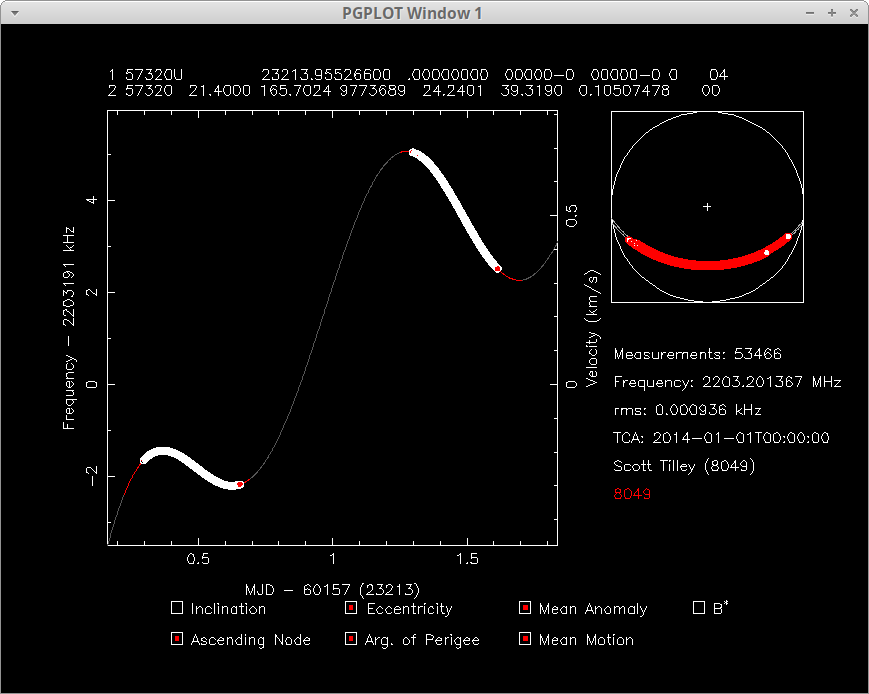I've reached the conclusion that LES-5 has a 'BAD ATTITUDE' or maybe its just being obstreperous! If you look carefully at this plot you'll see there are two nulls and peaks in the signal in a day. The gaps at the bottom/top eclipses, mid is me tracking something else. THREAD 

LES-5's antenna system has a beam-width around 35 degrees. If the satellite can't keep it's spin axis parallel Earth's axis than if it tilts more than 17.5 degrees up or down signal levels will be noticeably different twice a day. 

The tilt in LES-5's spin axis is called it's attitude. Controlled by a novel arrangement of electro-magnetics and an optical sensor system we have been studying in the telemetry. LES-5's attitude control system seems to have either completely failed or is only partially working. 

LES-5's bad attitude has become obvious since July. As its attitude seems to be continuing to get worse I'm planning on using the periodic signal level changes to measure the attitude changes over time. Using this we should be able to understand some more of the telemetry.
• • •
Missing some Tweet in this thread? You can try to
force a refresh



















